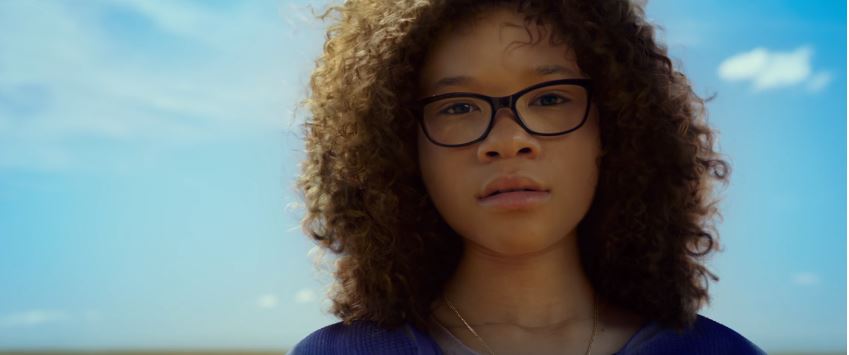My Movie Valentine: ‘A Wrinkle in Time’

Image courtesy of YouTube./ CC BY-NC 2.0.
(Content warning: This article contains mentions of abuse and eating disorders.)
At the kickoff of yet another year of high-budget studio films, I find myself celebrating the anniversary of “A Wrinkle in Time” with a re-watch. A year later, and the movie still upholds its vibrant portrayal of a dizzying time continuum and a wholesome kid adventure, all topped with an impeccably costumed Reese Witherspoon, Mindy Kaling, and a larger-than-life Oprah Winfrey. Ava DuVernay was lauded for being the first woman of color to direct a film with a $100+ million dollar budget, but the imaginative director deserves to be praised for the way she described the film; it is, in fact, a love letter to Black girls.
Four years after the disappearance of her scientist father, Meg Murray has tried to lead a normal life along with her mother and younger brother, Charles Wallace. But the vice-like grip of middle school and its goonies—bullies and smack talk—have picked at Meg’s skin long enough that it has left an insecure and cynical version of herself instead. It’s when Mrs. Whatsit, Mrs. Who, and Mrs. Which (Witherspoon, Kaling, and Winfrey) arrive in her backyard and sweep her, Charles Wallace, and her friend, Calvin, away that Meg finally decides to take a leap of faith and restore her life. She begins the tumultuous and whimsical search for her father that forces her to trust and believe in herself in order to be reunited with him. Meg is reminded that she is loved by the people around her—namely Charles Wallace and Mrs. Which—but when she has to fight the evil forces of the universe alone, she confronts her insecurities and chooses to love herself.
Fantasy media tends to be inclusive of dragons, elves, and goblins, but hardly of people of color. “A Wrinkle in Time” is subversive, as its fictional universe transforms itself at the beck and call of the Black female protagonist. The sense of escapism fantasy promises and often falls short on for its diverse audiences is present in this film. In a real world that does not nurture or coddle Black girls, Meg escapes to a world that allows her to travel freely only if she has confidence in herself and her abilities. At one point in the film, Mrs. Whatsit tells Meg that she gives her the gift of her flaws, which Meg balks at, but later learns that her flaws have only the power she gives them.
The film has a subtle yet sharp way at tugging on heartstrings by grounding the fiction with moments of reality. Brief scenes show a cowering Calvin being berated by his father and even Meg’s bully, Veronica, struggling with an eating disorder. It characterizes these as forces controlled by the evil in the universe known as the IT. Meg’s own difficulty with feeling comfortable about herself shifts after continued encounters with the IT. She recognizes that the strength to be a good person comes from a place of security in oneself.
Her growth is palpable even in smaller scenes. Outside of her house, before they get whisked away to a different planet, Calvin compliments Meg’s hair, which she wears out in curls. Meg rejects the compliment, scolding Calvin as if he’s said something forbidden. Later, after a narrow escape from an attack by the IT, Calvin compliments Meg’s hair again and she accepts it. Black hair has historically been politicized and Meg’s acceptance of such a major aspect of her identity is representative of her newfound power. Especially considering the fact that the compliment came from a white boy, who DuVernay said she deliberately cast to do a role reversal. Typically, white protagonists call the shots and their companions of color usually observe unwavering admiration and act at their discretion. Meg and Calvin beautifully reimagine that stereotype.
Politically-charged content often pervades the sea of socially progressive and inclusive media released. “A Wrinkle in Time” finds its muscle in being delicate with its politics, swapping fighting the system with ferociously loving oneself first. It reminds us that society’s hardest fighters are actually the ones worth fighting hard for. Even though it’s a curious and adventurous movie filled with grand settings and incredible CGI, it is unique in its portrayal of intense care for Black girls. And, if anything, “A Wrinkle in Time” is immortalized as one of the most important movies for Black girls to consume solely for the scene where Oprah’s eyes soften as she says the line, “Do you realize how many events and choices that had to occur since the birth of the universe leading to the making of you?”




